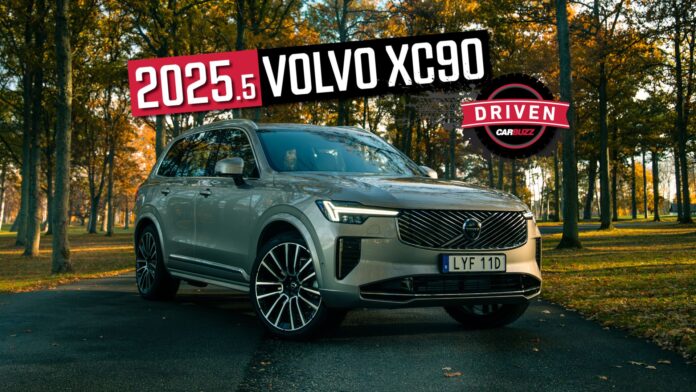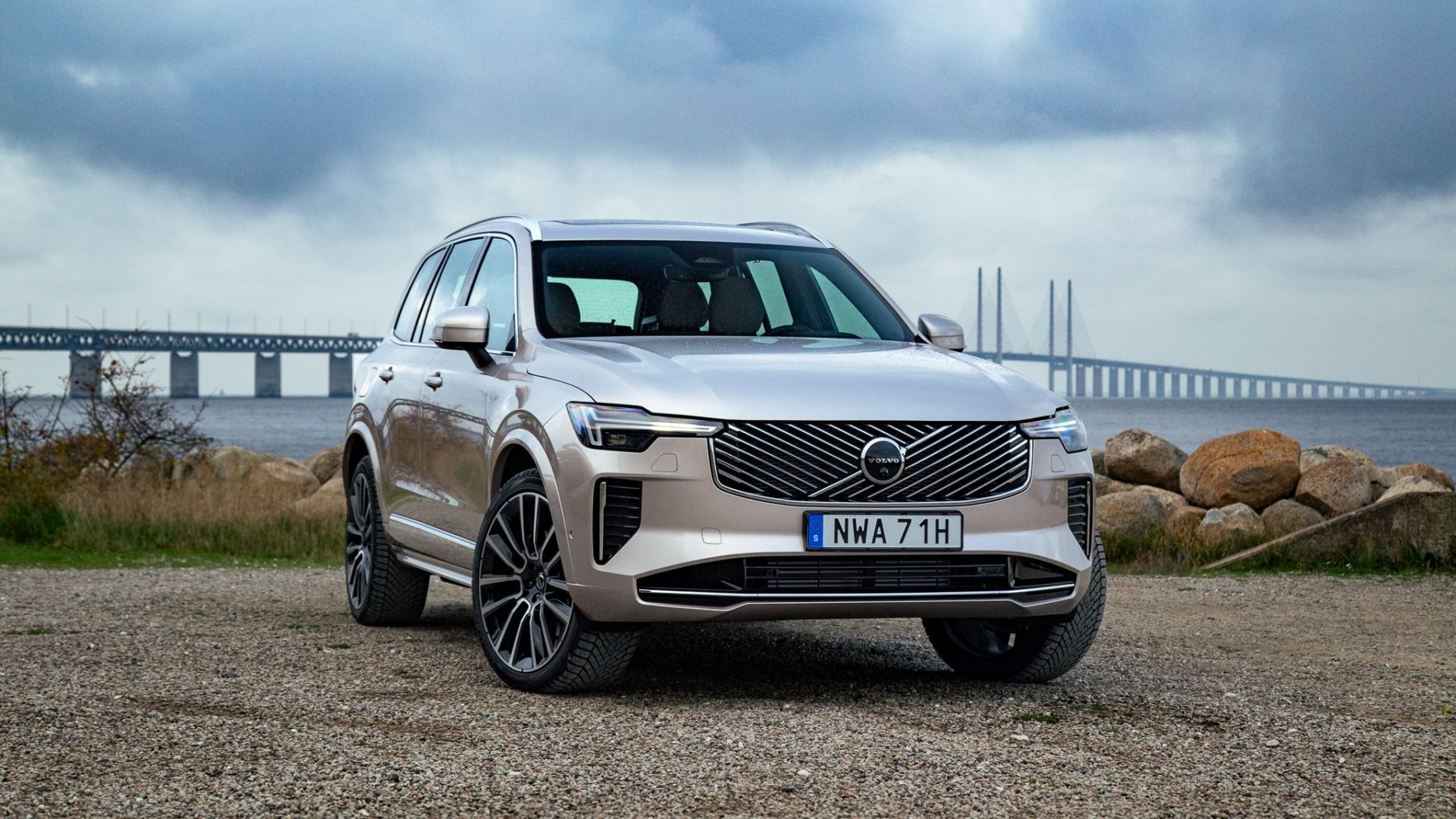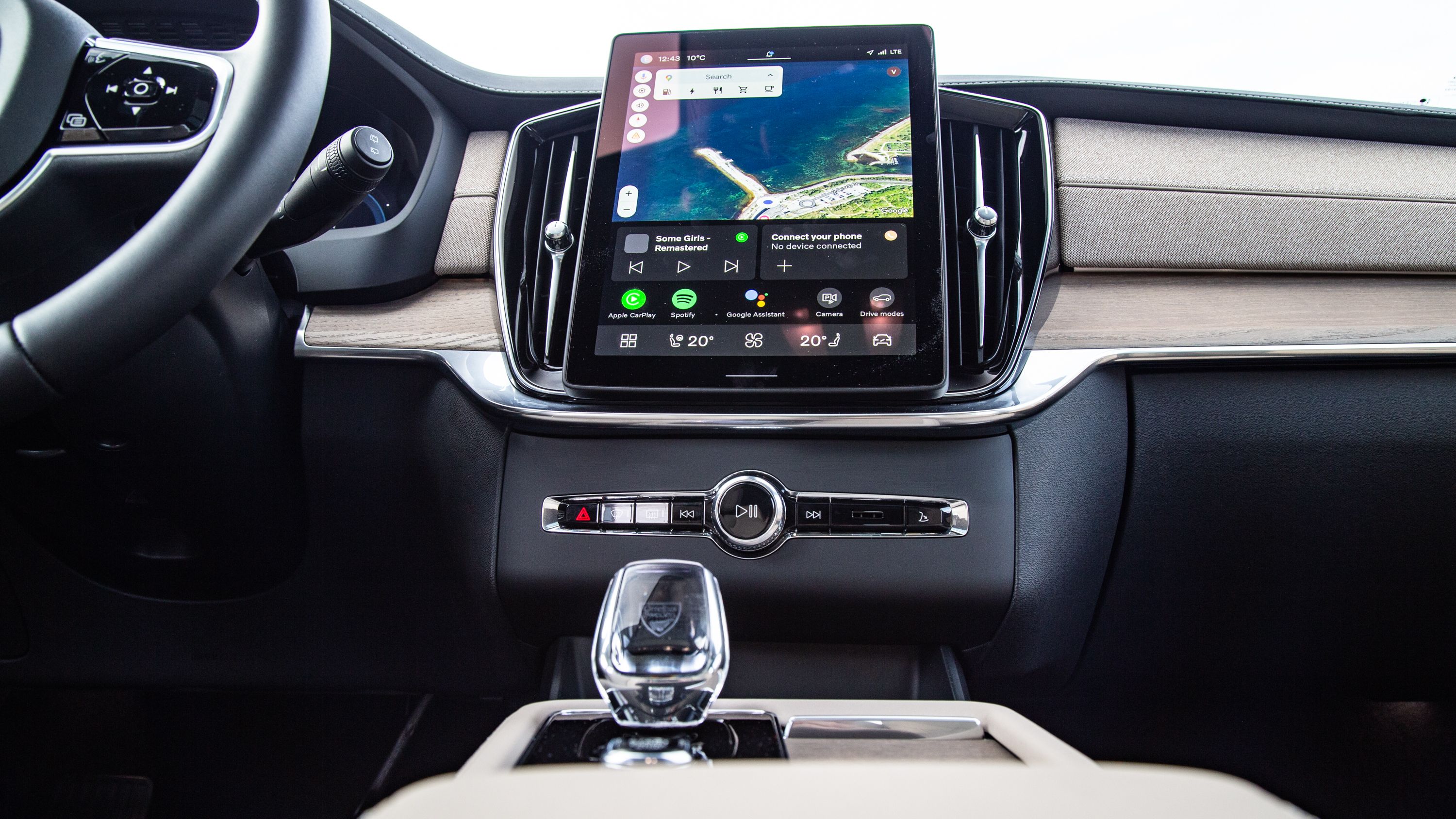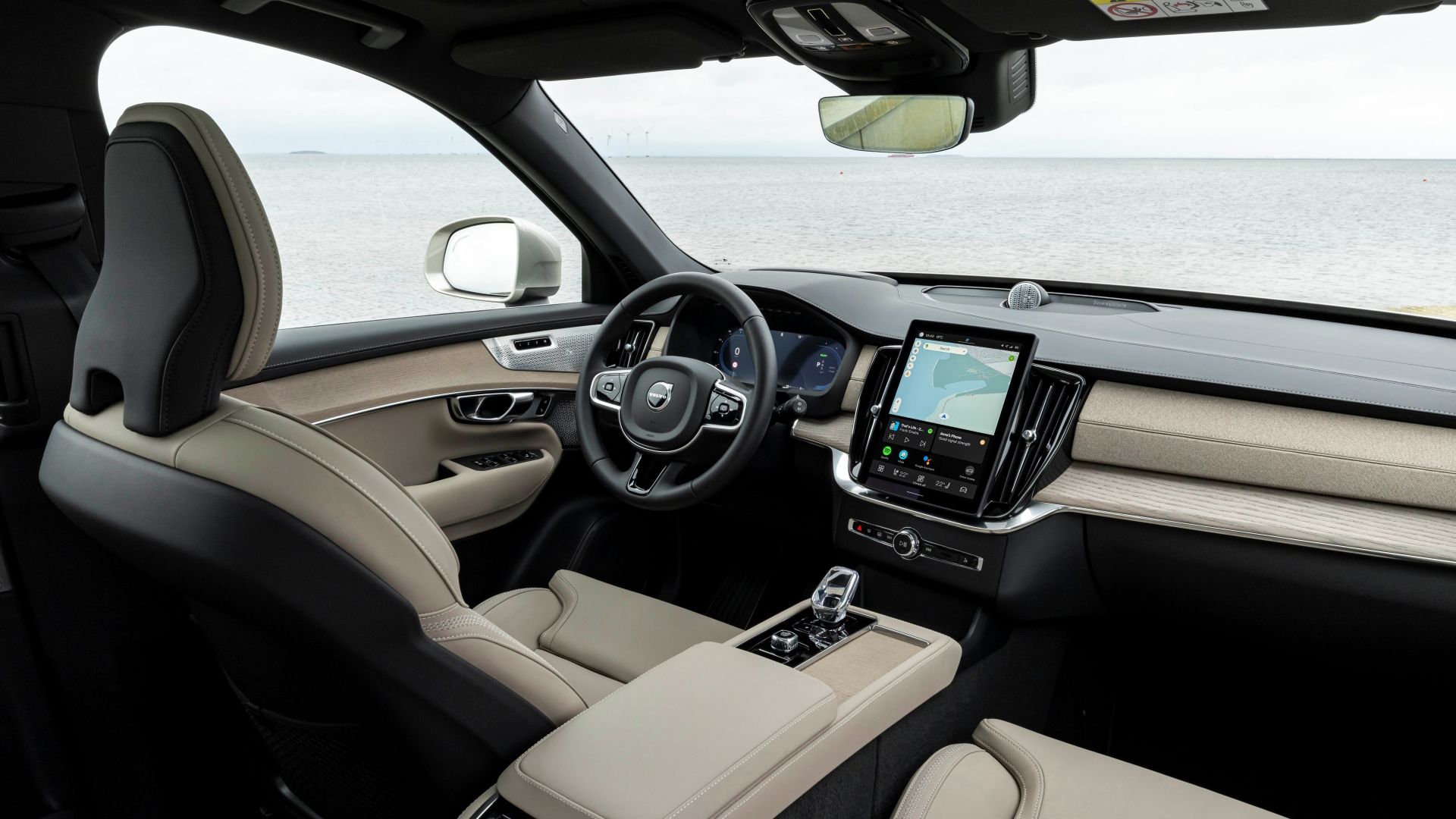The Volvo XC90 is the car that saved the Swedish automaker from what could have been a premature death. That was decades ago when the XC90 first launched, and the world has changed a lot since then. Still, the premium midsize SUV is a massively important model for Volvo, typically a harbinger for the rest of the Volvo brand’s future. The second generation first launched in 2015 and was a sign of things to come, launching firsts like a new modular architecture, advanced semi-autonomous safety systems, new infotainment, and a vast array of new powertrains, including the plug-in hybrid system that has become a core fixture in Volvo’s lineup.
Related
How This One Model Saved Volvo More Than Once
Here’s how the Volvo XC90 has kept the automaker relevant across two generations.
But nearly 10 years later, that second-generation XC90 is still around, and for the 2025 model year (or rather the latter half – this is technically a 2025.5 MY vehicle), the XC90 has undergone its second facelift in a bid to stay relevant among fresh competition that includes the Audi Q7, Mercedes-Benz GLE-Class, and Acura MDX, to name but a few.
To see whether the updates have done enough to keep it competitive, Volvo flew us to Denmark to sample the XC90 at the global media drive.
First Drive events provide our initial impressions of a vehicle in a restricted environment under limited time constraints. As such, this First Drive is only indicative of what to expect. Keep an eye on CarBuzz for our comprehensive Test Drive review which will follow as soon as the XC90 arrives stateside.
Is This An All-New Model Yet?
This is fundamentally the same XC90 that first wowed us in 2015, riding on the same Scalable Platform Architecture (SPA) underpinnings as it did then. There’s already been one facelift for this XC90 in 2019, but this is a more significant update with a visual overhaul inside and out. Volvo’s focus has primarily been on the technological front, however, with major updates made to the infotainment – which is now a Google built-in-based system with native app downloads and over-the-air updates on an 11.2-inch touchscreen – and interior design.

Add CarBuzz to your Google News feed.
Mechanical updates are limited; powertrain updates arrived in 2021 already, so Volvo has merely tightened up the rest of the package with revisions to the suspension and chassis, like the new Frequency Selective Dampers (FSD) on models not equipped with air suspension, and enhanced sound dampening for greater in-cabin refinement.
The Looks: Hoo Boy, It’s Handsome
The second-gen XC90 debuted a new styling direction for the brand that has worked brilliantly. That hasn’t changed, but Volvo’s found a way to make this iteration look even better. Lots of small tweaks have been made, many of which you won’t notice unless you have an old and a new XC90 standing side-by-side, like the revised taillights with a dark tint.
But from the front, this is a clear evolution that looks stunning; Volvo has won the design game yet again. The cross-diagonal grille looks mega in person, as do the new headlights, which retain the Thor’s Hammer motif and showcase the XC90 as a direct relative of the EX90. I prefer the non-pixelated version of the DRL signature on the XC90; it’s cleaner and more sophisticated in comparison to the EX90’s. Other changes seem minor, but the newly sculpted hood and larger wheels (with new designs up to 22 inches) bring the design together perfectly. This is far and away my favorite design in this vehicle segment right now.
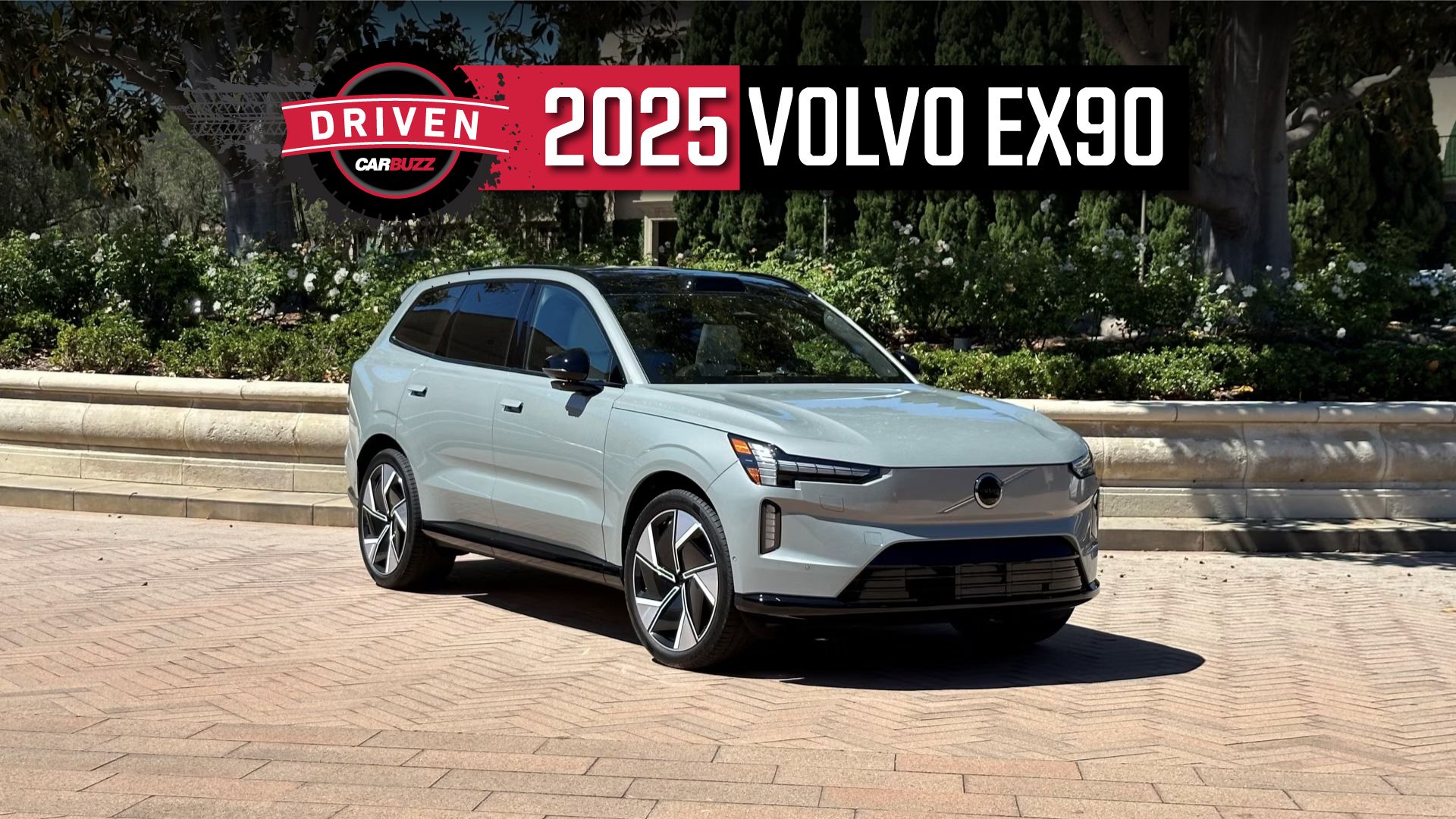
Related
2025 Volvo EX90 First Drive Review: The Electric Flagship Is Worthy – Mostly
The EX90 is an electric flagship with a premium interior and ample features for a tech-savvy vibe, but some parts of it will take some getting use to.
Exterior Color Options
- Crystal White
- Onyx Black
- Vapour Grey
- Denim Blue
- Silver Dawn
- Bright Dusk
- Mulberry Red (new)
The Drive: Evolution Over Revolution
Under the hood, there isn’t a single change to the three available powertrains; the last update occurred in 2021 when Volvo ditched the twincharged engine in T8 PHEV (it’s still available in the B6 variant). Volvo claims the chassis is where the XC90 has been enhanced the most, thanks to revised suspension tuning and greater noise insulation. More sound deadening has been added to the A- and B pillars which, in combination with optional laminated side windows, keeps out a lot – but not all – wind and road noise. On our drive, the occasional whistle of wind over the driver’s side mirror could still be heard, but in the PHEV, even in pure electric mode at highway speeds, the cabin was relatively quiet and comfortable.
2025.5 Volvo XC90 Engine Options |
|||
|
B5 |
B6 |
T8 PHEV |
|
|---|---|---|---|
|
Engine |
Mild-hybrid 2.0-liter turbocharged inline-4 |
Mild-hybrid 2.0-liter twincharged inline-4 |
Plug-in hybrid 2.0-liter turbocharged inline-4 |
|
Transmission |
8-speed automatic |
||
|
Drivetrain |
All-wheel drive |
||
|
Power |
247 hp |
295 hp |
455 hp |
|
Torque |
266 lb-ft |
310 lb-ft |
523 lb-ft |
|
0-60 |
7.3 seconds |
6.4 seconds |
5.1 seconds |
|
Top Speed |
112 mph |
||
Our First Drive included testing two variants of the XC90: a B5 with the base suspension and a T8 PHEV with air suspension.
Rides Smoother Than Before
As for the suspension, you’ve got two choices. A basic setup comprises double wishbones up front and integral link suspension at the rear, coupled with Frequency Selective Damper technology and the composite leaf spring that seemed an odd choice when the XC90 first arrived.
The problem with our first drive was that the roads around Denmark and Sweden were as smooth as the greens of the Augusta National Golf Club, making it difficult to test whether the updated suspension made any difference. I purposefully sought out manhole covers and cat’s eyes in the road, but aside from these slight bumps in isolation, all damped well with minimal secondary body movement, there was nothing to test the XC90’s default suspension. But a noticeable improvement compared to prior iterations was a softer rear-end, less prone to bucking over speed bumps when unladen.
The air suspension is still the better of the two setups in this situation, soaking up primary and secondary vibrations without the motion sickness-inducing floatiness that often accompanies air. It also provides better chassis control, displaying admirable composure through the rolling hillsides of rural Sweden, and then raising and lowering for easier ingress and egress and loading into the trunk. The caveat is that it’s only available on the top-spec Ultra trim, and even then, it’s a $1,800 option.
One-Pedal Driving: A Revelation For The Plug-In Hybrid
Volvo’s 2.0-liter four cylinders have never been the best-sounding, and that hasn’t changed. The base B5 powertrain sounds labored under hard acceleration, so even with power in reserve, it’s always asking you to back off a little.
The T8 plug-in hybrid has the benefit of an e-motor on the rear axle, capable of getting the XC90 to highway speeds and beyond without using a drop of gas, minimizing the load on the internal combustion engine and sparing occupants from enduring the gravelly tones of the four-pot under duress. There’s plenty of punch here, but with no mechanical connection between the front and rear axles (the ICE drives the front axle and the e-motor drives the rear), heavier throttle loads result in an undesirable jerk as the ICE springs to life in hybrid mode. It’s as if the two powertrain elements don’t talk to one another at the point of handover, like Olympic sprinters fumbling the baton exchange in the relay before finding their footing.

Expert Opinion
The B5 is quick enough but doesn’t like to be worked hard. At the other end of the spectrum, the T8 PHEV’s got plenty of power, but I’m not a fan of the way it transitions from EV to ICE under even moderate-to-high throttle loads, forcing you to drive around it. The electric range is nice, but the B6 will likely be the sweet spot with 295 hp and 310 lb-ft available.
If you can live with this odd behavior, the PHEV works well, with enough ‘go’ in either hybrid or Pure (electric only) driving modes, but the 32-mile electric range has now fallen behind the segment’s best. However, the saving grace is the XC90’s one-pedal driving with the ‘B’ transmission mode activated. You can enable a creep function through the touchscreen that never lets the XC90 come to a complete halt, but toggle this off, and you can drive the XC90 like an EV if you want, making the most of the regenerative braking.
|
2025.5 Volvo XC90 T8 Plug-in Hybrid Details |
|
|---|---|
|
Battery Capacity |
18.8 kWh (14.7 kWh usable) |
|
Electric Driving Range |
32 miles (EPA) |
|
Charging Time |
3 Hours (16-amp charger) |
|
One-Pedal Driving Capability |
Yes (switchable via infotainment) |
Speaking of braking, the T8 PHEV was curiously the better braker of the two, in terms of brake feel. Typically, automakers struggle to blend friction and regenerative braking but where the base B5 powertrain’s brake pedal felt wooden and lacked feedback, the T8’s seemed talkative, smooth at any speed, and confidence-inspiring – a reversal of roles from what I’m used to.
Interior & Technology: Better, Familiar, But Room To Improve
Fundamentally, the cabin of the XC90 is unchanged in that it still seats seven by default (optional second-row captain’s chairs reduce this to six). The third-row seats are still not advisable for adults or large teens, but they’ll suffice in a pinch, while the first and second rows have more than enough space for adults to get comfortable.
|
2025.5 Volvo XC90 Interior Dimensions |
||||||
|---|---|---|---|---|---|---|
|
Seating Capacity |
7 standard / 6 optional |
|||||
|
1st Row |
2nd Row |
3rd Row |
||||
|
Headroom |
38.9 inches |
38.5 inches |
36.3 inches |
|||
|
Legroom |
40.9 inches |
36.6 inches |
31.9 inches |
|||
|
Behind 1st Row |
Behind 2nd Row |
Behind 3rd Row |
||||
|
Cargo Volume |
Standard |
PHEV |
Standard |
PHEV |
Standard |
PHEV |
|
65.5 ft³ |
64.1 ft³ |
35.6 ft³ |
34.1 ft³ |
12.6 ft³ |
11.2 ft³ |
|
Fresh Materials Feel Light And Spacious, But Leather Replacement Is A Let-Down
Volvo doesn’t do the heavy, dark colors that epitomize premium SUVs from German rivals, and a choice of warm woods and lighter textiles dominate the interior palette (Charcoal is still an option though). With Volvo’s eco-conscious ambitions, an eco-friendly leather replacement called Nordico is the default on the Core and Plus trims with no alternative; a pity, as it’s not as comfortable as other leather replacements we’ve sampled. Ventilated nappa leather is only available on the top-spec Ultra model, available in an additional hue of Blond (a pale grey) over and above the Charcoal and Cardamom options of the Nordico. The special choice on this trim is the Herringbone weave fabric in Navy, which was comfortable, breathable, and looked fantastic.
A fresh dashboard design now uses wood inlays with a soft warm ambient light hidden behind fabric-clad panels on the dash. Unlike Mercedes’ and BMW’s endless array of RGB lighting configurations, Volvo’s is simple and classy but may alienate those who feel customization is important. New air vent designs (now vertical, because horizontal is so last season), a triple cupholder with space for two large cups and a small energy drink can between them, and an updated wireless charging pad also feature.
A lot of it is new, but none of it feels revolutionary; for anyone familiar with the new-generation Volvo offerings, this will feel like home.
Google Built-in Infotainment Is The Jewel In The Crown, But It’s Not Perfect
When the 2015 XC90 arrived, it signaled a new technological era for Volvo with a touchscreen infotainment interface that promised greater connectivity than ever. Well, nearly 10 years on, and technology has aged quicker than anticipated, so Volvo has given the experts their dues and enlisted Google’s help with the infotainment. Housed on a new portrait-orientated 11.2-inch touchscreen, a Google built-in operating system brings smartphone functionality to your family SUV with over-the-air updates, Google Maps, the Google Assistant, and the Google App Store catering to native app installation.
Anyone who’s operated an Android-based phone will find it easy to adapt to, and it responds well to touch inputs. It’s arguably more intuitive than the old system, with widgets for commonly used functions always on the home screen for quick access, even while using navigation. The home screen hotkey also makes it easy to get back to the core functions.
The epic 1,410-watt Bowers & Wilkins sound system carries over from the old XC90, and while it’s only available as an option on the Ultra trim, it’s still the best mainstream sound system we’ve heard in a car; the Gothenburg Concert Hall experience turns any commute into a full-on concert.
|
2025.5 Volvo XC90 Key Feature Availability |
||
|---|---|---|
|
Core |
Plus |
Ultra |
|
Equipped with Core features, plus: |
Equipped with Plus features, plus: |
|
|
Panoramic sunroof with power sunshade |
360-degree surround view camera |
Ventilated Nappa leather upholstery |
|
12.3-inch instrumentation screen & 11.2-inch infotainment display |
Front, rear, and side park assist |
4-way front seat lumbar adjustment with memory and seat cushion extension |
|
4-zone automatic climate control |
Laminated side windows |
Harman Kardon sound system |
|
Power front seats with heating |
Heated steering wheel |
Head-up display |
|
Nordico synthetic upholstery |
Heated rear seats |
Optional Bowers & Wilkins sound system |
|
10-speaker sound system |
Optional Harman Kardon sound system |
Optional Herringbone weave upholstery in Navy |
|
Pilot Assist driver assistance system with adaptive cruise |
||
But, and I feel no shame in flogging this old horse, the absence of physical controls means even the most familiar driver will have to draw their eyes away from the road to change basic settings like climate control and drive modes. The only physical controls are for volume and skipping songs; the rest are accessed through the screen.
Sure, you can use voice controls for some of it thanks to the Google Assistant – “Hey Google, do this thing for me” – but on more than one occasion, I had to repeat or rephrase my requests to adjust the climate control. Some functionality can’t be managed from the system at all, like drive mode selection. Where Volvo set new standards nine years ago, it’s now fallen behind. Audi’s ChatGPT-based voice commands, for example, can control in-depth vehicle functions like drive modes and the MBUX system in Mercedes models has allowed control over the windows, sunroof, and even heated seats for several years. Google is a powerful tool, but instead of letting me control the car as I wanted to, it was more interested in helping me find out what the weather was like (though why it switched from Celsius to Fahrenheit for no reason, I’ll never understand).
But because this is Google-based, it will continue to improve with time, and OTA updates mean you’ll get into the XC90 to go to work one morning, and the problems you complained about the day before may be fixed overnight.
Verdict & Pricing: Fresh, But Not A Class Leader
In a country like the US where bigger is always better, the XC90 is vital for a brand like Volvo. It’s the automaker’s biggest seller, so it needs to remain competitive. With EV demand not growing as rapidly as it seemed to be when Volvo announced its plans to go all-electric, this second facelift of the XC90 is now the torchbearer for Volvo’s combustion carryover, which means a lot is riding on its shoulders.

First Drive Verdict
After being on the market for a decade, this second facelift of the XC90 needed to be a huge evolution for Volvo’s top dog; it needed to be revolutionary. But it doesn’t quite hit the bullseye. From the outside, it promises a significantly evolved experience, but from behind the wheel, there’s a sense it hasn’t changed all that much. I don’t believe in evolution for evolution’s sake, but in this segment, the competition is tighter than ever. Maybe the pristine Scandinavian roads I experienced the XC90 on didn’t showcase the chassis enhancements as well as American roads might, but as it stands, the MY25.5 Volvo XC90 is a stylish, spacious, and above all else, safe family SUV. It’s a strong contender in the segment, it just hasn’t catapulted itself to the front of the class in the same way it did a decade ago.
International first drives make it tough to judge all facets of a car; I feel many of the suspension enhancements may have gone unnoticed due to Scandinavia’s near-perfect road surfaces, and a US road test when the XC90 arrives stateside will allow us to deliver a more definitive verdict.
Pricing & Trim Availability
The updated Volvo XC90 arrives as a 2025.5 model year with three powertrains, three trim levels, and two seating configurations:
|
Core* |
Plus |
Ultra |
|
|
B5 AWD Mild Hybrid |
$58,450 |
$62,550 |
$66,950 |
|
B6 AWD Mild Hybrid |
$63,350 |
$66,150 |
$70,550 |
|
T8 AWD Plug-in Hybrid |
$73,000 |
$75,800 |
$80,200 |
|
*Core available only as a 7-seater. Second-row captain’s chairs on Plus and Ultra are a $500 option. |
|||
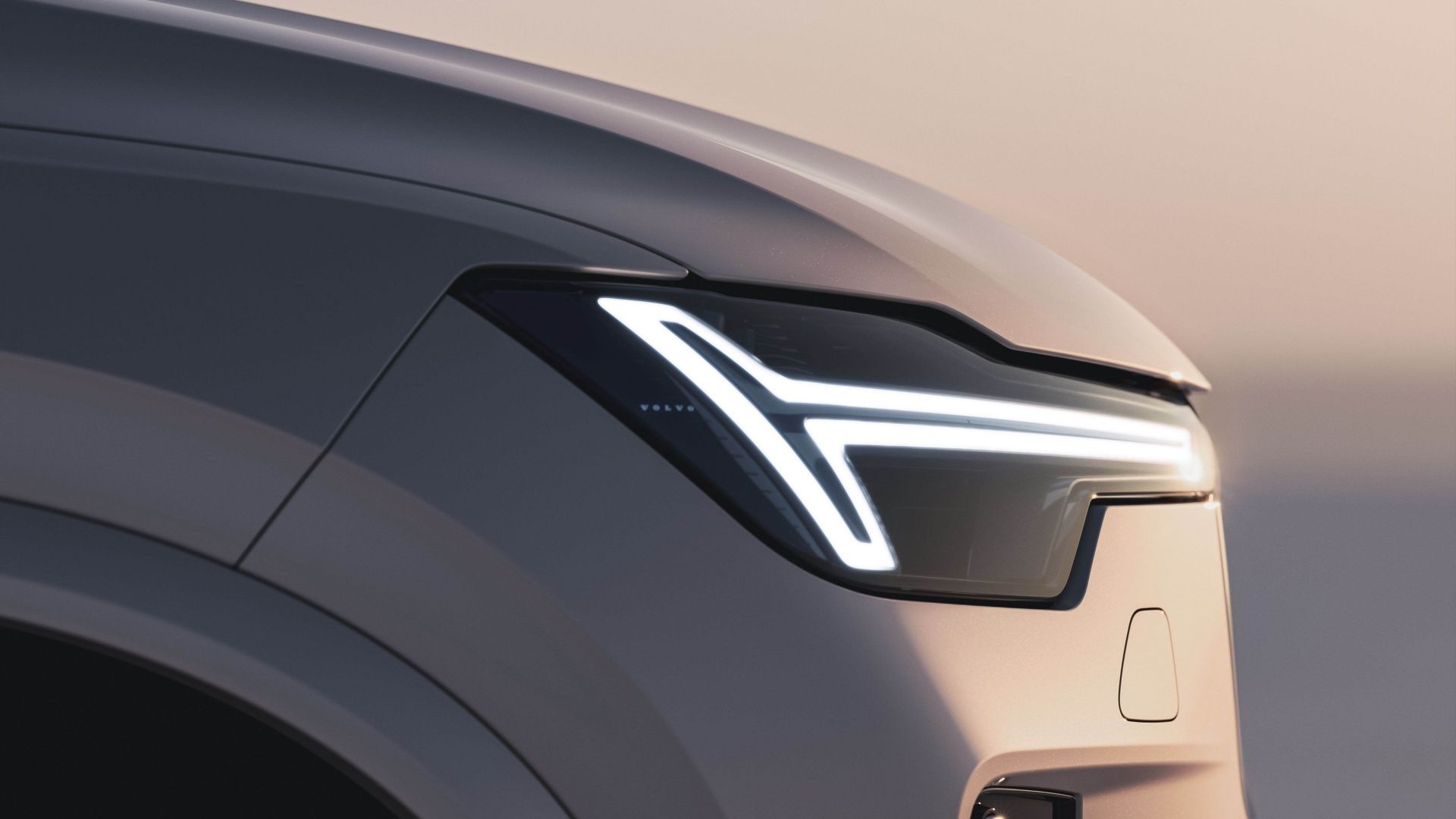
Related
Volvo Has The Best New Car Deal No One Is Talking About
What if you could get 5% off your new car’s MSRP and get free flights for two and a hotel stay thrown in as well?

